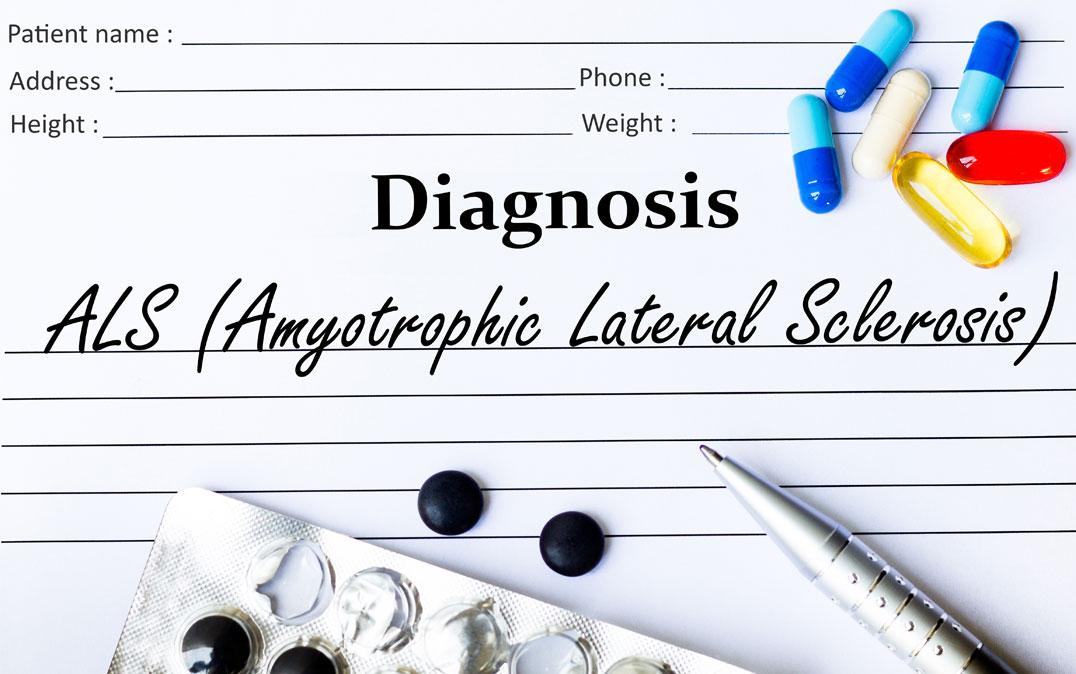Research News
Discovery of a Disease-Specific Biomarker for Amyotrophic Lateral Sclerosis
 Image by Marcelo Ricardo Daros/Shutterstock
Image by Marcelo Ricardo Daros/ShutterstockSporadic amyotrophic lateral sclerosis (ALS) accounts for 90% of all ALS cases. Researchers from the University of Tsukuba discovered that the editing efficiency at the glutamine/arginine (Q/R) site of GluA2 messenger RNA coding protein that constitutes the glutamate receptor is significantly reduced in the cerebrospinal fluid, which may serve as a new diagnostic biomarker for ALS.
Tsukuba, Japan—ALS is an incurable and rare neurodegenerative disease caused by the selective cell death of motor neurons. It is a disorder that develops in mature age, with an annual incidence of 1-2 per 100,000 individuals. However, as the risk of developing ALS increases drastically with age, the global trend of increased longevity contributes to an increase in the current incidences of ALS. Moreover, so far, neither a fundamental treatment nor a reliable diagnostic marker has been developed for sporadic ALS.
It has been demonstrated that dysregulation of RNA editing due to the downregulation of RNA editing enzyme is responsible for motor neuron death in sporadic ALS, which accounts for 90% of all ALS cases (Neurobiol Dis. 45(3):1121-1128, 2012). In healthy motor neurons, the glutamine/arginine (Q/R) site of GluA2 messenger RNA (mRNA) is completely edited and codes for the protein that forms the AMPA receptor, a type of glutamate receptor. Glutamate is a neurotransmitter that transmits neuronal excitation. However, in sporadic ALS, the Q/R site-unedited GluA2 mRNA emerges, resulting in motor neuron death (Nature. 427(6977):801, 2004). In this study, researchers found that the editing efficiencies at the Q/R site of GluA2 mRNA in the cerebrospinal fluid of patients with sporadic ALS were significantly reduced compared with those of the control group. In particular, patients with ALS with reduced editing efficiency experienced longer disease duration and advanced symptoms, particularly in the functioning of the lower limbs. Currently, therapies targeting the dysregulation of RNA editing are being developed (EMBO Mol Med. 5(11):1710-1719, 2013; Life Sci Alliance 5(4):e202101193, 2022), and it is believed that the editing efficiency at the Q/R site of GluA2 mRNA could be a biomarker not only for ALS diagnosis but also for determining treatable ALS cases.
###
This research was supported by JSPS KAKENHI (grant numbers 19K23957 and 21K15178), the Uehara Memorial Foundation (grant number 202010135), the Yukihiko Miyata Memorial Trust For ALS Research and the GSK Japan Research Grant 2017.
Original Paper
- Title of original paper:
- Glutamine/arginine site-unedited GluA2 mRNA in cerebrospinal fluid as a biomarker for amyotrophic lateral sclerosis
- Journal:
- Journal of Neurology, Neurosurgery, and Psychiatry
- DOI:
- 10.1136/jnnp-2023-331164
Correspondence
Assistant Professor HOSAKA TakashiInstitute of Medicine, University of Tsukuba
Professor Shin Kwak
Department of Neurology, Tokyo Medical University



